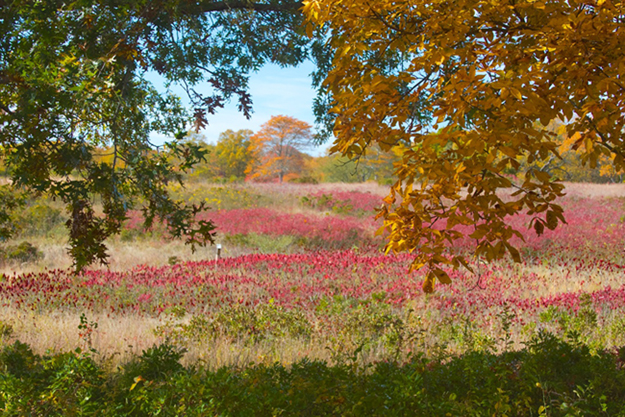Weekend Edition: Not four seasons, but six

I lived the ‘70s decade in Vermont, back when you could count on a week or so of sub-zero temperatures 24 hours a day. Improbably, my battered Volkswagen Beetle never failed to start, although a running board rusted off. In the morning, its pre-radial tires would freeze flat where they met the parking lot so for the first mile of so it felt like you were riding on squares instead of circles. Friends say it rarely stays that cold anymore.
One Vermontism I picked up on after a while was that the Green Mountain State had six, not four seasons: unlocking, spring, summer, fall, locking and winter. Somewhat obviously, the locking and unlocking seasons refer to the fierce seizure and rather timid release of the implacable cold. The timing of locking was November-ish, but unlocking always seemed to come in March. There would be a couple of warm days in early March, 50’s sometimes 60’s, when you realized that winter’s dominion was cracking. Frozen like concrete, the ground slowly thawed turning dirt roads into muddy, foot-thick rivers — mud season.
Because of the severe temperatures, strict six-season territory is northern New England, but I would submit that much of the Northeast, including Shelter Island, has a psychological form of the six seasons. Without resorting to research, I seem to remember a couple of warm days in early March that had me saying, it’s over, it’s unlocking. Real spring is the forsythia spring. It can’t get any more official than that. Our ferns, in their stubby missile silos, seem eager to launch and the tulips are not too far away.
A few weeks ago, we readied the garden, turning it over, putting down some black plastic weed guard and laying out the soaker hoses. Some lettuce is poking up. After years of my lobbying, we’re going to put in some wildflowers and cut back on the zukes and cukes, which if you let them go, as we are wont to do, look like they were grown in the amped-up soil of Chernobyl. It’s a good season, spring.
My feelings for summer have evolved. Early on, it seemed to take forever to get to summer, beach summer. Of course — and I think this is a universal for Islanders and renters — once it arrives it blows right past you. You’re lucky if you see July 4th coming because if you’re not careful the Fourth will be fast receding in round the corner. Finito. This used to bother me but no more. The August swelters have become a bit too oppressive (no central air) and we’ve let the beach routine become almost formulaic. And there’s the beloved visitors. (Wonderful folks all. Leaving it right there.) But mostly it’s about getting to September.
I’ve always been an autumn guy for all the usual reasons. Crisp temperatures, the slanted golden October light, great sleeping, the advent of wood fires, breaking out a favorite jacket and heading to Mashomack. The beaches are never prettier than in the fall. In Vermont, there was that one day when the foliage was at its peak and it didn’t seem possible to be that spectacular.
The telltale sign of the Island locking season is the more frequent rumbling of the boiler. I swear I can actually see little winged dollar bills slowly making their way up the chimney. It’s a bit depressing knowing what’s coming: the darkness, the bleakness, the winged currency becoming five spots. But somehow, when winter puts its foot down, I accept, adapt, have a drink and trudge on, knowing those warm days in March will eventually come.
Manhattan has the four conventional seasons. I think to have locking and unlocking you need more land and less concrete. Winter doesn’t affect the pace of life, and it really boils down to appropriate footgear and dressing warmly. There’s lots of stuff to do. Indeed, winter’s still a pain in the neck but it rolls right along until the pear trees, the city’s equivalent of the Island’s heralding forsythia, explode in blossoms overnight.
There is another immutable marker of spring in the city: The day when all, and I mean all, young Manhattan women start to wear those flip-flop-like sandals, with their office shoes in a tote. I have often wondered how they — and we’re talking millions of young women here — coordinate this footgear turning point. Is there a vast phone tree? An Internet-based flip-flop early warning alert? An applet? Perhaps scientists down the road will discover that this simultaneous flip-flop behavior is caused by a recessive gene activated when young New York women reach a certain number of shoe store visits per year (200? 500?).
I’m betting app.








